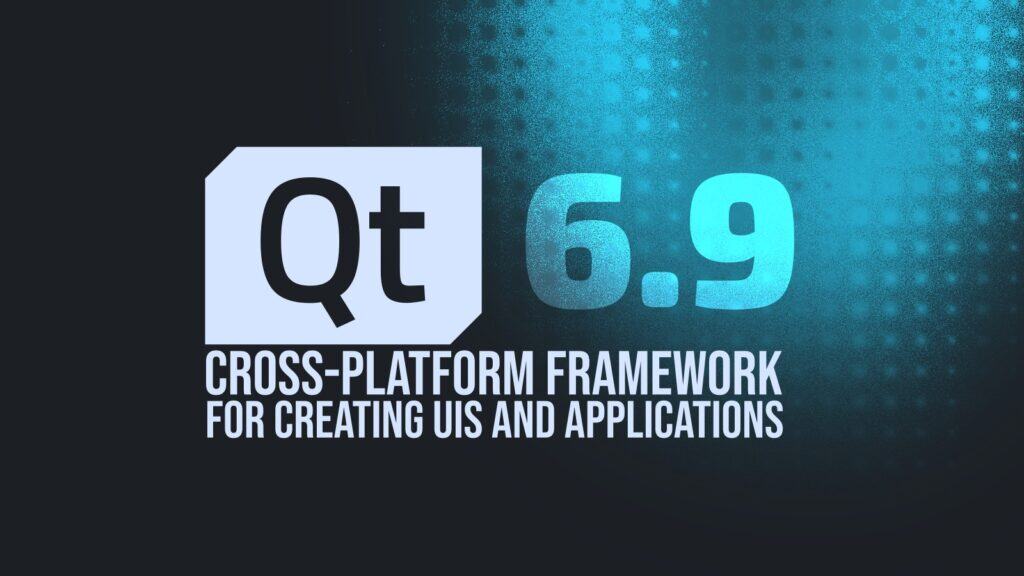Qt, a cross-platform software development framework widely used for designing and deploying graphical user interfaces (and the backbone of the widely adopted KDE desktop environment), has just released its latest version, 6.9.
One of the most prominent highlights of this new release is the expansion of 3D graph capabilities through Qt Graphs. This module introduces support for transparency in 3D surface charts, making it easier to produce smooth, layered visuals where data points overlap.
Developers can also benefit from a new QSpline3DSeries feature, which renders data in splines for 3D charts, alongside new chart, axis, and label customizations.
Interestingly, it is now possible to inject a graph into a View3D from Qt Quick 3D, enabling more expressive 3D data visualizations. Meanwhile, 2D charts get a nifty boost in input handling, plus a configurable plotArea in QGraphsView for controlling the exact positioning of rendered graphs.
Moreover, emoji support has been thoroughly revitalized in Qt 6.9. Now, Qt automatically detects emoji sequences in text, selecting color fonts according to the latest Unicode standards.
Notably, support extends to CBDT and COLRv1 font formats, guaranteeing scalable, high-quality rendering across platforms. To facilitate granular control, QFontDatabase offers new APIs for selecting a specific font family for emoji, thus allowing thorough user interface customization.
Another enhancement involves the Qt.ExpandedClientAreaHint window flag and the new SafeArea attached property in Qt Quick. These features let the application content extend from edge to edge on the display while still respecting system UI elements.
Developers can, for example, place a full-width image in the title bar zone or design immersive scenes that fill the entire screen, all without disrupting essential interface controls.
For those working heavily with SVGs, Qt 6.9 provides the first implementation of CSS animations for color, fill, stroke, and transform properties. This update applies to the Qt SVG module when rasterizing SVGs into multiple pixmaps, as well as the VectorImage element introduced in Qt 6.8. Thanks to this feature, developers can directly integrate animated SVGs into the Qt Quick scene graph, simplifying workflows for dynamic interfaces.
Qt 6.9 also packs a series of performance improvements to make sure applications remain sleek and responsive:
- CPU Core Preferences: QThread can now specify performance vs. efficiency core usage on modern CPU architectures, optimizing application speed or energy consumption as needed.
- QQuickPaintedItem Acceleration: On OpenGL platforms, the
FramebufferObjectrendering mode is back, delivering hardware-accelerated imperative painting. - OpenGL ES and Direct 3D Upgrades: The OpenGL ES RHI backend supports multisampled rendering for sharper visuals, while the Direct 3D RHI backend uses a dedicated vblank watcher thread to reduce latency on Windows.
- Variable Rate Shading: On non-OpenGL RHI backends, Qt can leverage variable rate shading, beneficial for XR applications, particularly with Qt Quick 3D XR on visionOS.
- Shadow Efficiency: The new
RectangularShadowelement in Qt Quick and better control over shadow maps in Qt Quick 3D help optimize graphics rendering, preventing expensive computations. - Item View Tuning: Widget-based applications gain a performance boost through better handling of large data changes in item models, while QHeaderView memory usage is dramatically lower as long as section resizing and reordering remain disabled.
Lastly, Qt Quick 3D now supports Order Independent Transparency (OIT). This feature addresses long-standing visual errors caused by manually sorting overlapping transparent objects. Instead of developers painstakingly sorting geometry by depth, OIT uses the Weighted Blended technique to balance performance demands and rendering fidelity.
For more information, see the announcement. The next minor Qt release, 6.10, is expected this September.
